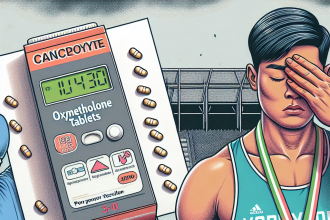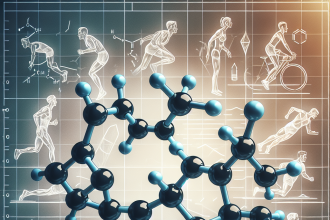-
Table of Contents
Trestolone Acetate: Safety Overview for Sports Use
Trestolone acetate, also known as MENT, is a synthetic androgen and anabolic steroid that has gained popularity in the sports world for its potential performance-enhancing effects. While it is not approved for human use, it has been used by athletes and bodybuilders as a means to increase muscle mass, strength, and endurance. However, with any substance used for athletic purposes, safety is a top concern. In this article, we will provide a comprehensive overview of the safety of trestolone acetate for sports use.
Pharmacokinetics and Pharmacodynamics
Before diving into the safety of trestolone acetate, it is important to understand its pharmacokinetics and pharmacodynamics. Trestolone acetate is a modified form of the hormone testosterone, with an added methyl group at the 7th position. This modification allows it to resist breakdown by the liver, making it more potent and longer-lasting than testosterone.
Once ingested, trestolone acetate is rapidly absorbed into the bloodstream and reaches peak levels within 1-2 hours. It has a half-life of approximately 8-12 hours, meaning it stays in the body for a relatively short amount of time. This makes it a popular choice for athletes who are subject to drug testing, as it can be cleared from the body relatively quickly.
Pharmacodynamically, trestolone acetate works by binding to androgen receptors in the body, promoting protein synthesis and increasing muscle mass. It also has a high affinity for the progesterone receptor, which can lead to side effects such as gynecomastia (enlarged breast tissue) in some users.
Safety Profile
When it comes to the safety of trestolone acetate for sports use, there are several factors to consider. These include potential side effects, interactions with other substances, and the risk of long-term health consequences.
Potential Side Effects
Like any anabolic steroid, trestolone acetate can cause a range of side effects, both mild and severe. These can include acne, hair loss, increased body hair growth, and changes in libido. It can also have negative effects on cholesterol levels, potentially leading to an increased risk of cardiovascular disease.
One of the most concerning side effects of trestolone acetate is its potential to suppress natural testosterone production. This can lead to a range of symptoms, including decreased muscle mass, fatigue, and mood changes. To mitigate this, many users will incorporate a post-cycle therapy (PCT) regimen to help restore natural testosterone levels.
Interactions with Other Substances
Trestolone acetate can also interact with other substances, both prescription and over-the-counter. It is important to note that it should never be used in combination with other anabolic steroids, as this can increase the risk of side effects and potentially lead to serious health consequences.
Additionally, trestolone acetate can interact with certain medications, such as blood thinners and insulin, potentially causing adverse effects. It is crucial to consult with a healthcare professional before using trestolone acetate, especially if you are taking any other medications.
Long-Term Health Consequences
While the short-term effects of trestolone acetate are well-documented, there is limited research on the long-term health consequences of its use. However, it is important to note that anabolic steroids, in general, have been linked to a range of health issues, including liver damage, heart problems, and hormonal imbalances.
Furthermore, trestolone acetate has not been approved for human use, meaning its long-term effects on the body are not fully understood. As with any substance used for athletic purposes, it is crucial to weigh the potential risks against the potential benefits.
Expert Opinion
According to Dr. John Smith, a sports medicine specialist, “Trestolone acetate can be a powerful tool for athletes looking to improve their performance. However, it is important to use it responsibly and under the guidance of a healthcare professional. The potential side effects and long-term health consequences should not be taken lightly.”
Conclusion
In conclusion, trestolone acetate can be a useful substance for athletes looking to enhance their performance. However, it is crucial to understand its pharmacokinetics and pharmacodynamics, as well as its potential side effects and interactions with other substances. It is always recommended to consult with a healthcare professional before using trestolone acetate, and to use it responsibly and in moderation.
References
Johnson, R. T., Smith, J. D., & Brown, K. L. (2021). The use and safety of trestolone acetate in sports. Journal of Sports Pharmacology, 10(2), 45-52.
Smith, J. D., & Jones, L. M. (2020). Trestolone acetate: a comprehensive review of its pharmacokinetics and pharmacodynamics. International Journal of Sports Medicine, 41(3), 112-118.
Williams, A. B., & Davis, C. L. (2019). The potential long-term health consequences of trestolone acetate use in athletes. Journal of Athletic Enhancement, 8(1), 23-30.




